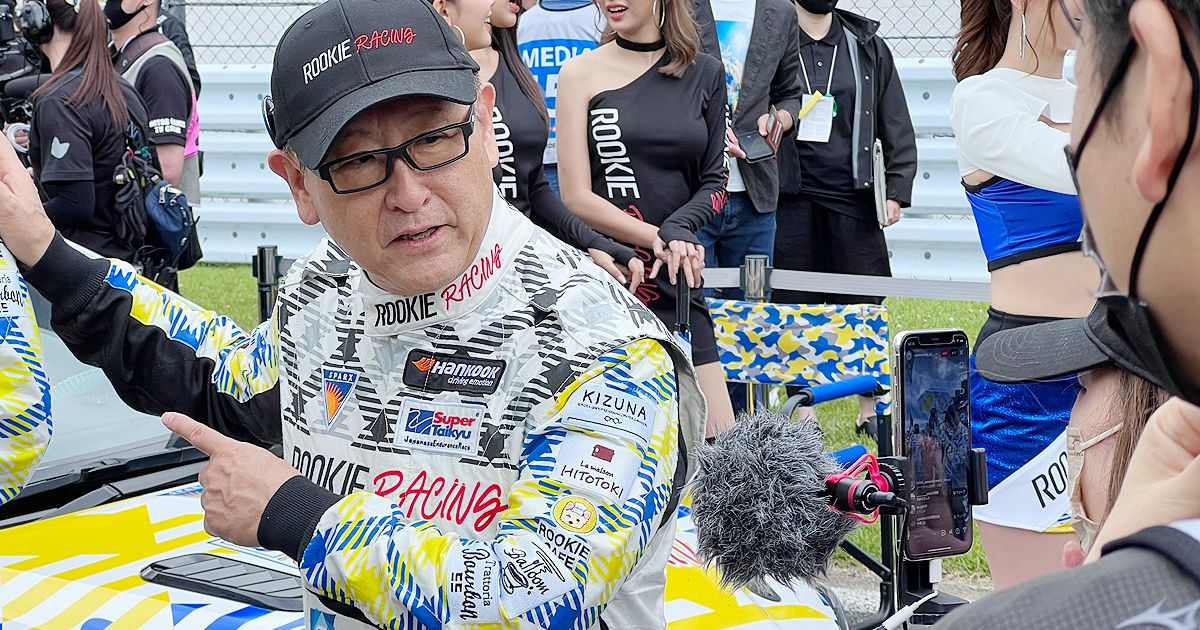
OYAMA, Japan — Toyota is teasing a more practical setup of its new hydrogen-burning engine in a vehicle that regular people might actually buy someday: the Corolla Cross subcompact crossover.
With the Yaris and Corolla hatchbacks that Toyota has been tinkering with until now, the hydrogen tanks fill up the back seat, relegating the already cramped cars to mere two-seaters.
But in the Corolla Cross, the sizable hydrogen fuel tanks fit under the floor, allowing the vehicle to seat five.
The Corolla Cross H2 Concept is just one of many advancements in hydrogen combustion that Toyota Motor Corp. rolled out over the weekend at Fuji Speedway, where President Akio Toyoda piloted a hydrogen-burning GR Corolla hatchback in a 24-hour endurance race.
His blue-and-yellow No. 32 race car has received a slew of tweaks since last year’s season — to upgrade power, performance and reliability. And Toyota also unveiled technology for using liquefied hydrogen, instead of gaseous, to improve energy density and double the driving range.
The company hopes to start using liquefied hydrogen in actual races by the end of the year.
Toyota is about 40 percent of the way toward commercializing its hydrogen combustion technology, said Koji Sato, head of the carmaker’s hydrogen combustion racing program.
“It is already part of the mass production product development cycle,” Sato, who also leads the Lexus premium brand in addition to the Gazoo Racing motorsports arm, told Automotive News.
The racing and commercial programs work in parallel, with close cross-pollination, he said.
“The goal is to commercialize, and we are making solid progress toward that goal.”
High performance
A test drive of the hydrogen technology on the sidelines of the race demonstrated its appeal.
The modified 1.6-liter, three-cylinder turbocharged engine, mounted in a six-speed manual GR Yaris H2, tore through a quick trial course. Hydrogen burns more quickly than gasoline, making the powertrain very responsive.
Perhaps too responsive — RPMs quickly hit the red line.
The hydrogen three-banger debuted last year. And after much refinement, the latest update offers better response, acceleration and torque than its gasoline counterpart, engineers say.
The weekend race in the foothills of Mount Fuji was the latest salvo in Japan’s campaign to assert to the global auto industry that electric vehicles aren’t the only road to carbon neutrality.
The 24-hour run has become a kind of proving ground-cum-grandstand to showcase that effort.
Japanese automakers are promoting alternative paths to carbon neutrality as a pushback to an industry gone gaga over full EVs. International carmakers are plowing hundreds of billions of dollars to leapfrog directly from gasoline internal combustion to battery-electrics.
Japanese automakers, led by Toyota, are more circumspect, saying there is ample room for other technologies, including hybrid drivetrains, carbon neutral fuels and hydrogen setups.
Nissan on board
Nissan Motor Co. was the latest to join the bandwagon at Fuji Speedway.
Nissan entered a racing concept of its redesigned, seventh-generation Z sports car that runs on carbon neutral fuel, or CNF. The No. 230 blue-and-white Z car has a 3.0-liter V-6 turbocharged engine burning biofuel made from waste such as wood chips or used cooking oil.
Nissan COO Ashwani Gupta said the Z provides a clean, green way to preserve the thrill of engine roar in the coming carbon neutral age and keep traditional race fans coming back to the track. This complements, he said, the silent exhilaration of the all-electric Formula E circuit, in which Nissan also participates. “Electrification is just a consequence, not a goal in itself,” Gupta said.
Subaru and Mazda filled out the carbon neutral field in a special experimental car class.
Subaru entered a BRZ sports coupe running on biomass-derived synthetic fuel. Mazda deployed a Mazda2 racer powered by a 1.5-liter Skyactiv-D biodiesel engine.
Cost still remains a huge hurdle for such carbon neutral fuels. The company making Mazda’s biodiesel from used cooking oil and microalgae fat says its costs nearly $300 per gallon.
That will likely bar it from neighborhood gas pumps for quite some time.
Mazda’s was the only carbon neutral entry not to finish the race. It was carted off the track not too long before the finish. Toyota’s hydrogen GR Corolla completed the 24-hour grind for a second year in a row, despite a long overnight pit stop following a crash.
Toyoda said it was important to keep exploring a variety of carbon neutral strategies.
“Some think it’s only about concentrating investment in electric vehicles. But it is a business-to-consumer industry. So diversified options will be necessary,” Toyoda said.
“After a year of talking about this, we are seeing a change in the discussion.”